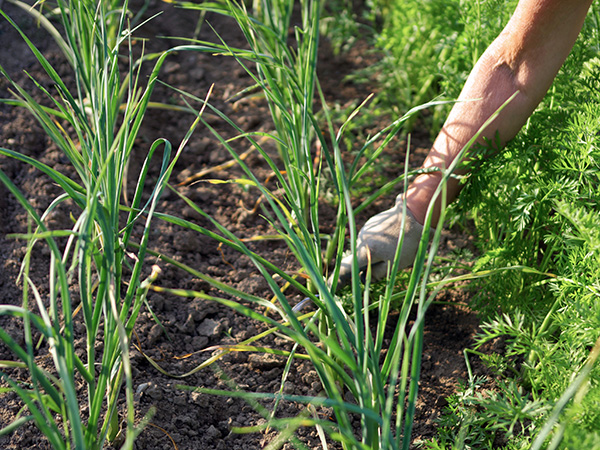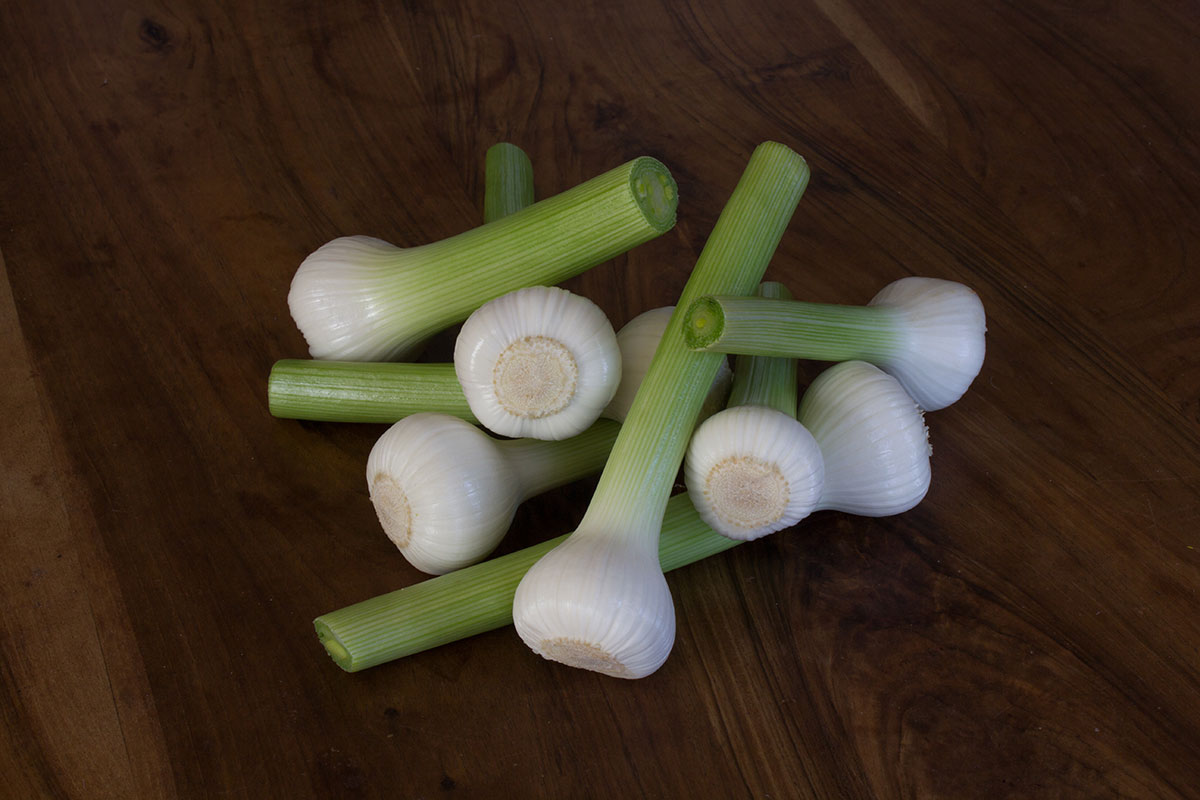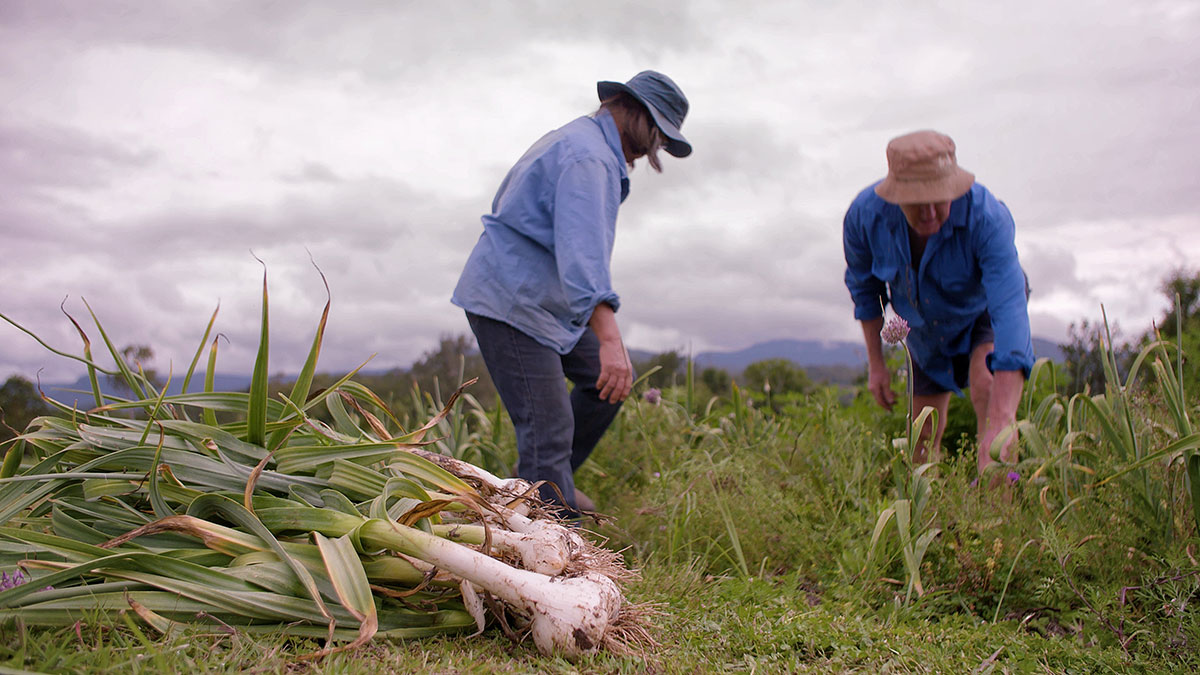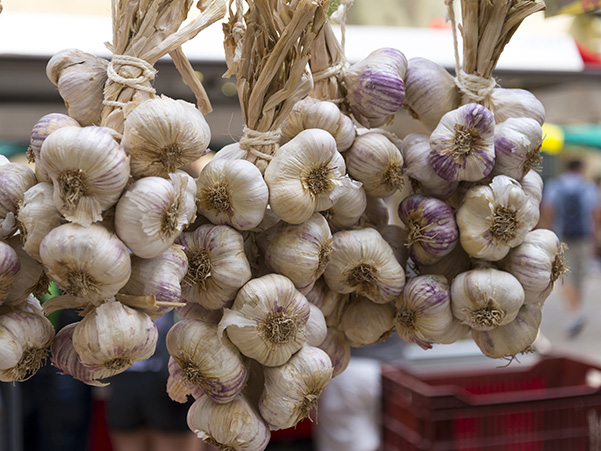Easy 'ready to plant' garlic
A low-maintenance crop
Caution: do not plant garlic in soil which was used in the preceding year for growing vegetables belonging to the onion family: garlic, shallots, onions, leeks.
Garlic grows in all types of soil as long as this soil is well aerated and non-sandy, and fares well on soil with residual fertilizer from previous crops. A nitrogen-free basal fertilizer containing potash and sulphur can also provide added benefits.
Garlic is an ecological crop, and rarely requires chemical treatments as long as certified plants are used to prevent diseases (viruses, rot, nematodes) it rarely requires treatment.
Garlic leaves can be chopped like chives and sprinkled onto a salad, an omelette or cottage cheese. Enjoy garlic leaves all year round by placing a garlic bulb on top of a pitcher filled with water (change water regularly). Leaves will start growing, and you will be able to cut these and use them for cooking.


Quick and easy to plant
Separate the garlic cloves and plant only the largest, healthiest and well-shaped cloves. Keep the smaller cloves at the centre of the head for cooking.
Plant cloves in soil, 3 cm deep, point upwards. Plant in rows spaced 30 cm apart, and allow for 10 cm between each clove. For poorly drained soil: plant in ridges (10-cm high ridges).
Another option is to plant cloves closer together. That way whole fresh garlic plantlets can be harvested earlier on, and mature garlic can be harvested later on.
Use a trough planter without a self watering system. Fill with a mixture of peat compost. Place outside on a window sill exposed to sunlight. Bring inside if you wish to harvest a few days earlier. However the plant needs to be kept outside until the end of January as garlic bulbs and young plantlets need cold weather to develop.
Low maintenance
Hoe the soil to get rid of weeds. Water plants (during bulb formation) if the month of May is dry for nice vigorous plants.
Garlic can be grown just about anywhere. Garlic is a hardy plant which grows in all types of soil, except soil that stays very humid throughout the winter. Choose a piece of land in a nice sunny spot. Prepare soil by turning it over with a spade or pitchfork before planting.
A fertilizer for flower bulbs can be used. If planting in rich garden soil, no fertilizer is required.

Spread out your harvest!


Garlic planted in autumn can be harvested:
As early as April
For whole fresh garlic (garlic plantlets) which is harvested before the bulb is formed. Enjoy whole fresh garlic sprinkled with a bit of salt, chopped in a salad, or as a topping on cottage cheese…
Garlic leaves: chop like chives, and sprinkle on a salad or omelette.
In May
Harvest fresh as needed for cooking. If you’re using certified plants, you will find that garlic leaves are as tasty as cloves.
From June
Harvest at maturity and leave to dry in the shade for a couple of days (direct sunlight damages the plant and alters storage qualities), then braid in a rope.
Tips for storing and curing garlic
Tips for growing garlic
Do not water garlic in the month before harvest. Harvest when garlic is mature in dry weather, preferably in the afternoon. Leave stalks and bulbs to dry in the shade for a couple of days (direct sunlight damages the plant and alters storage qualities).
Keep garlic in a warm place!
After harvest, garlic enters dormancy and can no longer produce a sprout. When temperatures drop, garlic comes out of dormancy. In order to ensure proper storage, garlic should be kept at a temperature above 18 °C and cold spells should be avoided.
The best place to store garlic is the place where it is used: in the kitchen!
Tied in a bunch, in a braid or a mesh bag, garlic adds a decorative touch to the kitchen, where it is ready at hand for cooking.

